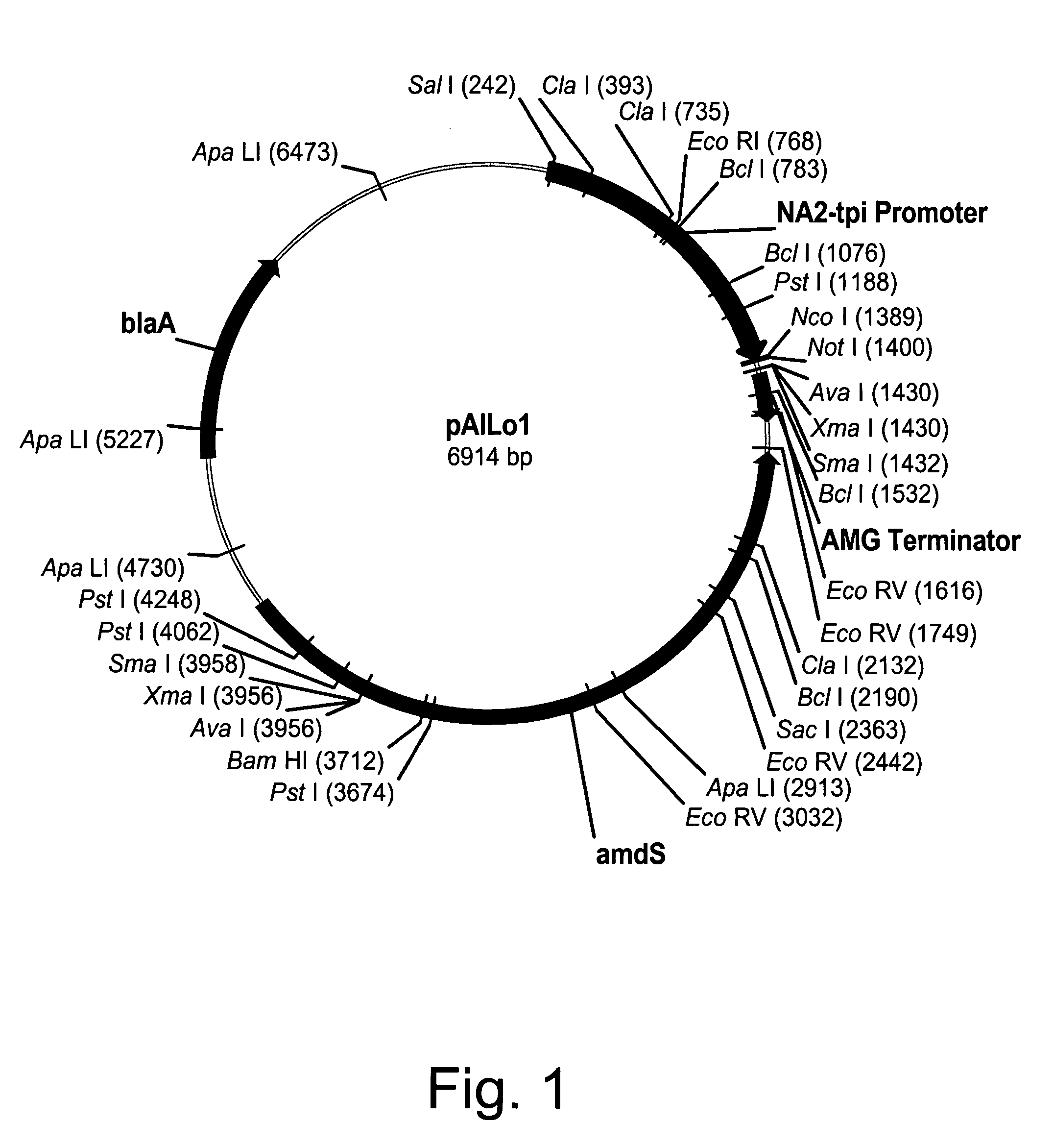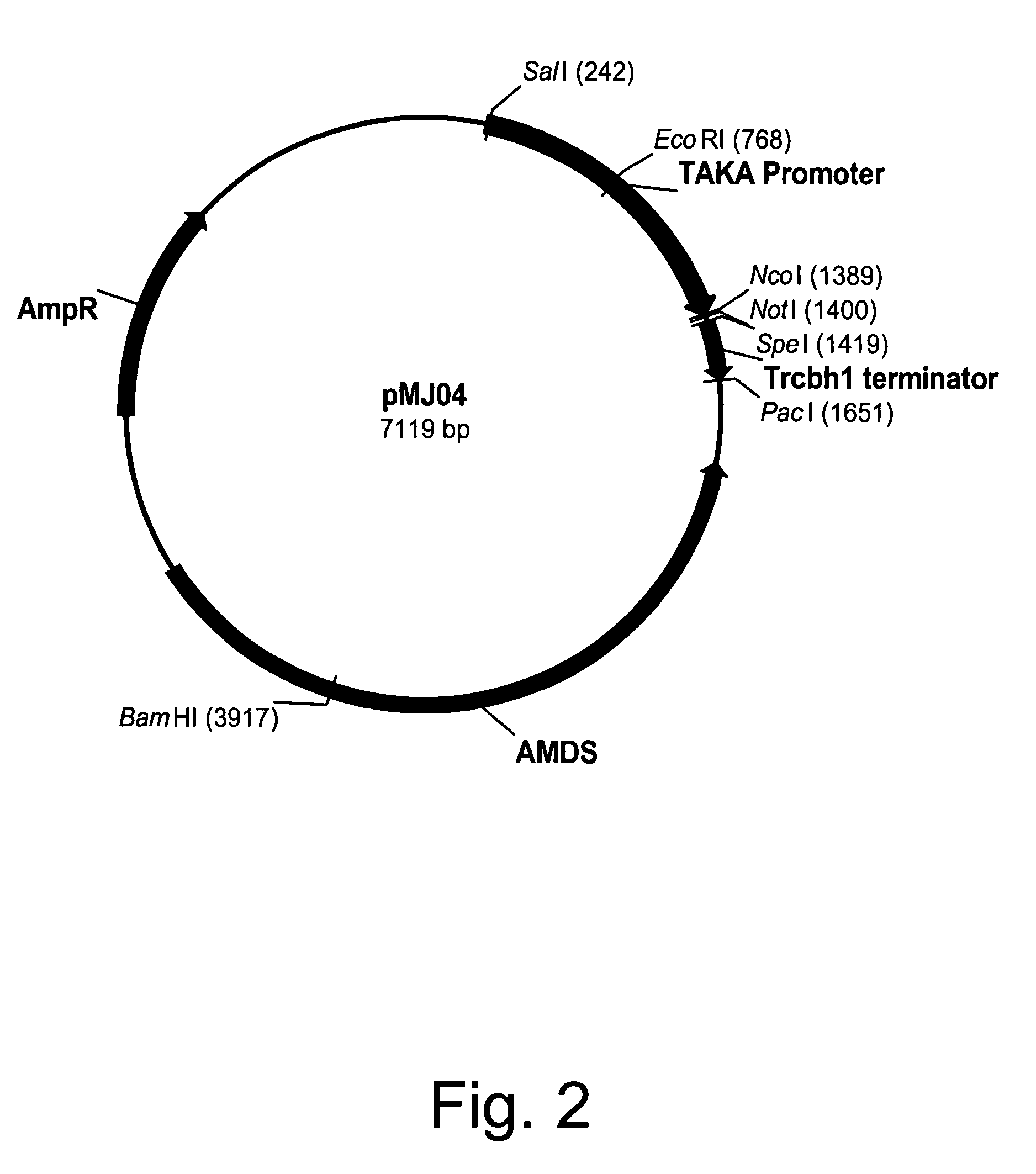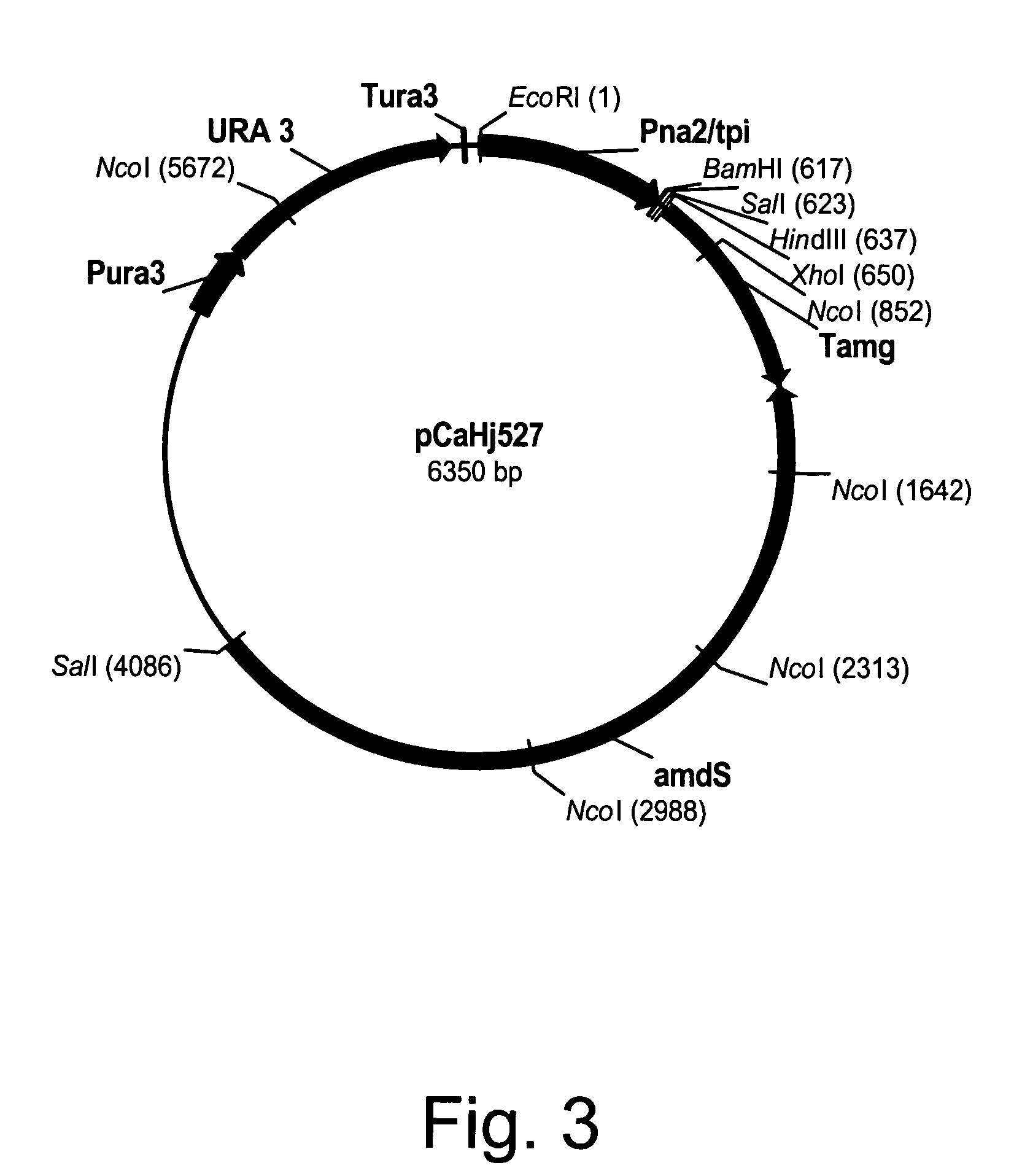Methods for degrading or converting plant cell wall polysaccharides
a technology of cell wall polysaccharides and degradable or converting plants, which is applied in the direction of finely divided material pretreatment, waste based fuel, viruses/bacteriophages, etc., can solve the problems that the full complement of enzymes may not be insufficient to be economically viable, and the microorganisms that degrade cellulose and other cell wall polysaccharides may not be ideal for large-scale conversion of cellulosic materials
- Summary
- Abstract
- Description
- Claims
- Application Information
AI Technical Summary
Problems solved by technology
Method used
Image
Examples
example 1
Construction of pAlLo01 Expression Vector
[0250]Expression vector pAlL01 was constructed by modifying pBANe6 (U.S. Pat. No. 6,461,837), which comprises a hybrid of the promoters from the genes for Aspergillus niger neutral alpha-amylase and Aspergillus oryzae triose phosphate isomerase (NA2-tpi promoter), Aspergillus niger amyloglucosidase terminator sequence (AMG terminator), and Aspergillus nidulans acetamidase gene (amdS). All mutagenesis steps were verified by sequencing using Big-Dye™ terminator chemistry (Applied Biosystems, Inc., Foster City, Calif.). Modification of pBANe6 was performed by first eliminating three Nco I restriction sites at positions 2051, 2722, and 3397 bp from the amdS selection marker by site-directed mutagenesis. All changes were designed to be “silent” leaving the actual protein sequence of the amdS gene product unchanged. Removal of these three sites was performed simultaneously with a GeneEditor™ in vitro Site-Directed Mutagenesis Kit (Promega, Madison,...
example 2
Construction of pMJ04 Expression Vector
[0258]Expression vector pMJ04 was constructed by PCR amplification of the Trichoderma reesei exocellobiohydrolase 1 gene (cbh1) terminator from Trichoderma reesei RutC30 genomic DNA using primers 993429 (antisense) and 993428 (sense) shown below. The antisense primer was engineered to have a PacI site at the 5′-end and a SpeI site at the 3′-end of the sense primer.
[0259]
Primer 993429 (antisense):(SEQ ID NO: 8)5′-AACGTTAATTAAGGAATCGTTTTGTGTTT-3′Primer 993428 (sense):(SEQ ID NO: 9)5′-AGTACTAGTAGCTCCGTGGCGAAAGCCTG-3′
[0260]Trichoderma reesei RutC30 genomic DNA was isolated using a DNeasy Plant Maxi Kit (QIAGEN Inc., Valencia, Calif.).
[0261]The amplification reactions (50 μl) were composed of 1× ThermoPol Reaction Buffer (New England BioLabs, Beverly, Mass.), 0.3 mM dNTPs, 100 ng of Trichoderma reesei RutC30 genomic DNA, 0.3 μM primer 993429, 0.3 μM primer 993428, and 2 units of Vent polymerase (New England BioLabs, Beverly, Mass.). The reactions we...
example 3
Construction of pCaHj568 Expression Vector
[0264]Expression plasmid pCaHj568 was constructed from pCaHj170 (U.S. Pat. No. 5,763,254) and pMT2188. Plasmid pCaHj170 comprises the Humicola insolens endoglucanase V (EGV) coding region. Plasmid pMT2188 was constructed as follows: The pUC19 origin of replication was PCR amplified from pCaHj483 (WO 98 / 00529) with primers 142779 and 142780 shown below. Primer 142780 introduces a Bbu I site in the PCR fragment.
[0265]
142779:(SEQ ID NO: 10)5′-TTGAATTGAAAATAGATTGATTTAAAACTTC-3′142780:(SEQ ID NO: 11)5′-TTGCATGCGTAATCATGGTCATAGC-3′
[0266]The Expand PCR System (Roche Molecular Biochemicals, Basel, Switserland) was used for the amplification following the manufacturer's instructions for this and the subsequent PCR amplifications. PCR products were separated on an agarose gel and an 1160 bp fragment was isolated and purified using a Jetquick Gel Extraction Spin Kit (Genomed, Wielandstr, Germany).
[0267]The URA3 gene was amplified from the general Sacch...
PUM
| Property | Measurement | Unit |
|---|---|---|
| pH | aaaaa | aaaaa |
| pH | aaaaa | aaaaa |
| pH | aaaaa | aaaaa |
Abstract
Description
Claims
Application Information
 Login to View More
Login to View More - R&D
- Intellectual Property
- Life Sciences
- Materials
- Tech Scout
- Unparalleled Data Quality
- Higher Quality Content
- 60% Fewer Hallucinations
Browse by: Latest US Patents, China's latest patents, Technical Efficacy Thesaurus, Application Domain, Technology Topic, Popular Technical Reports.
© 2025 PatSnap. All rights reserved.Legal|Privacy policy|Modern Slavery Act Transparency Statement|Sitemap|About US| Contact US: help@patsnap.com



